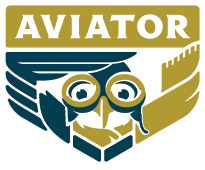My bird does not want to fly, what do I do?
Most likely your bird does not want to fly because his wings were clipped when he was young while his brain was developing. Other than a bird that has been injured, or wings clipped we have never seen a case of a bird that will not fly.
Humans often believe a clipped bird can glide to the floor safely. Your bird actually sees this as an unsafe and traumatic out of control ‘crash landing’. When babies experience unsafe situations the response is stored into the hypothalamus and becomes part of their instinctive behavior after adolescence. As an adult many they will not fly well, if at all’ because their brain is telling them that flight is dangerous and to be avoided. Sometimes you can slowly change his past brain experience by taking your bird to a large open area where there is nothing but short grass for at least 50 feet. There must not be anything but your own legs in the birds’ peripheral vision. Before you try this your bird must be comfortable standing and walking in grass. Place the bird between your legs and lift his body about one inch off the ground and gently drop him. It will take a few times for him to learn to use his wings to balance as he drops and lands. As he gains confidence you can slowly raise him higher for the drop.
Developing the confidence to use the wings for balance and learning to glide to a controlled landing may take a while, so go slow. You are attempting to change a significant amount of life experience that developed when he was young and his brain was learning how to navigate.
The next step is to work with your harnessed bird on a windy day. Perching your bird on your hand, face him into the wind. His natural instinct is to raise his wings. As he does this start to walk into the wind and encourage him to raise his wings. Take your time!
Other than this exercise, the best increase in flight and coordination skills is achieved by an accumulated positive life experience by getting out of the house while safely wearing the Aviator Harness.
